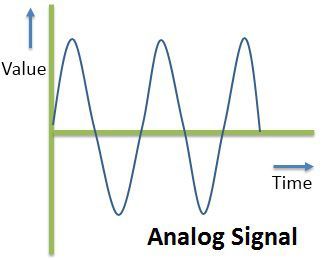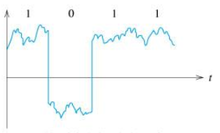What is a signal?
INTRODUCTION
In communication systems, signal processing, and electrical engineering, a signal is a function that "conveys information about the behavior or attributes of some phenomenon".[1] In its most common usage, in electronics and telecommunication, this is a time varying voltage, current or electromagnetic wave used to carry information. A signal may also be defined as an "observable change in a quantifiable entity".[2] In the physical world, any quantity exhibiting variation in time or variation in space (such as an image) is potentially a signal that might provide information on the status of a physical system, or convey a message between observers, among other possibilities.[3] The IEEE Transactions on Signal Processing states that the term "signal" includes audio, video, speech, image, communication, geophysical, sonar, radar, medical and musical signals.[4] In a later effort of redefining a signal, [2] anything that is only a function of space, such as an image, is excluded from the category of signals. Also, it is stated that a signal may or may not contain any information.
In nature, signals can take the form of any action by one organism able to be perceived by other organisms, ranging from the release of chemicals by plants to alert nearby plants of the same type of a predator, to sounds or motions made by animals to alert other animals of the presence of danger or of food. Signaling occurs in organisms all the way down to the cellular level, with cell signaling. Signaling theory, in evolutionary biology, proposes that a substantial driver for evolution is the ability for animals to communicate with each other by developing ways of signaling. In human engineering, signals are typically provided by a sensor, and often the original form of a signal is converted to another form of energy using a transducer. For example, a microphone converts an acoustic signal to a voltage waveform, and a speaker does the reverse.[1]
The formal study of the information content of signals is the field of information theory. The information in a signal is usually accompanied by noise. The term noise usually means an undesirable random disturbance, but is often extended to include unwanted signals conflicting with the desired signal (such as crosstalk). The prevention of noise is covered in part under the heading of signal integrity. The separation of desired signals from a background is the field of signal recovery,[5] one branch of which is estimation theory, a probabilistic approach to suppressing random disturbances.
Engineering disciplines such as electrical engineering have led the way in the design, study, and implementation of systems involving transmission, storage, and manipulation of information. In the latter half of the 20th century, electrical engineering itself separated into several disciplines, specialising in the design and analysis of systems that manipulate physical signals; electronic engineering and computer engineering as examples; while design engineering developed to deal with functional design of user–machine interfaces.
TYPES OF A SIGNAL
The signal may be in the form of analog and digital.So, we can express a signal in two forms. Those are ,
ANALOG SIGNAL: An analog signal is any continuous signal for which the time varying feature (variable) of the signal is a representation of some other time varying quantity, i.e., analogous to another time varying signal. For example, in an analog audio signal, the instantaneous voltage of the signal varies continuously with the pressure of the sound waves. It differs from a digital signal, in which the continuous quantity is a representation of a sequence of discrete values which can only take on one of a finite number of values.[6][7] The term analog signal usually refers to electrical signals; however, mechanical, pneumatic, hydraulic, human speech, and other systems may also convey or be considered analog signals.
An analog signal uses some property of the medium to convey the signal's information. For example, an aneroid barometer uses rotary position as the signal to convey pressure information. In an electrical signal, the voltage, current, or frequency of the signal may be varied to represent the information.
Any information may be conveyed by an analog signal; often such a signal is a measured response to changes in physical phenomena, such as sound, light, temperature, position, or pressure. The physical variable is converted to an analog signal by a transducer. For example, in sound recording, fluctuations in air pressure (that is to say, sound) strike the diaphragm of a microphone which induces corresponding fluctuations in the current produced by a coil in an electromagnetic microphone, or the voltage produced by a condenser microphone. The voltage or the current is said to be an "analog" of the sound.

DIGITAL SIGNAL:A digital signal is a signal that is constructed from a discrete set of waveforms of a physical quantity so as to represent a sequence of discrete values.[8][9][10] A logic signal is a digital signal with only two possible values,[11][12] and describes an arbitrary bit stream. Other types of digital signals can represent three-valued logic or higher valued logics.
Alternatively, a digital signal may be considered to be the sequence of codes represented by such a physical quantity.[13] The physical quantity may be a variable electric current or voltage, the intensity, phase or polarization of an optical or other electromagnetic field, acoustic pressure, the magnetization of a magnetic storage media, etc. Digital signals are present in all digital electronics, notably computing equipment and data transmission.
With digital signals, system noise, provided it is not too great, will not affect system operation whereas noise always degrades the operation of analog signals to some degree.
Digital signals often arise via sampling of analog signals, for example, a continually fluctuating voltage on a line that can be digitized by an analog-to-digital converter circuit, wherein the circuit will read the voltage level on the line, say, every 50 microseconds and represent each reading with a fixed number of bits. The resulting stream of numbers is stored as digital data on a discrete-time and quantized-amplitude signal. Computers and other digital devices are restricted to discrete time.
| digital signal |
A signal can be modified from an analog form to digital form by using some methods.Those are called as SAMPLING and QUANTIZATION. We will discuss about these in brief later.























No comments